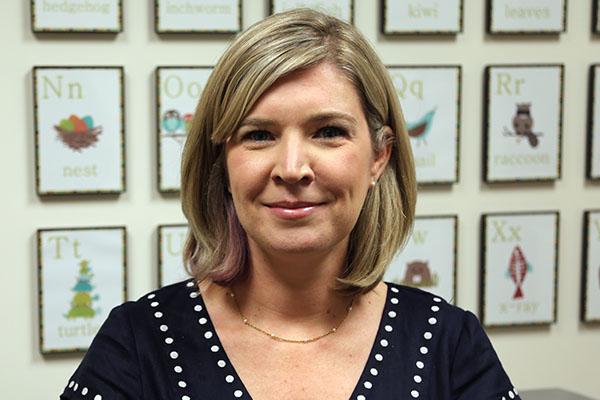Psychology professor flipped her research project to look at children's screen time, stress
During spring semester 2020, Virginia Tompkins had a new study working with young children set to begin. Her students were ready to go. The study questions were finalized and the study subjects were set up.
COVID-19 had other plans.
The planned study had to be postponed due to its in-person components.
“Emotionally, letting go of the fact that I was finally going to collect data with kids again has been tough. It was so close to being ready to go and then it just all got dashed,” said Tompkins, an associate professor of psychology.
As COVID-19 restrictions ramped up and virtual options rolled out, Tompkins saw an opportunity to look at the effect of screen time on children. She decided to make some lemonade out her pandemic lemons.
“With COVID, I kept seeing parents talk about screen time and how all those recommendations we hear all the time are completely out the window,” Tompkins said. “I thought it was a good opportunity to capture change as it was happening.”
The new study took advantage of many of the resources available at Ohio State.
By using the online volunteer database ResearchMatch, Tompkins broadened her pool of study participants beyond the immediate area to nationwide. Those participants were able to interact with the study multiple times using the online survey tool Qualtrics. Since Tompkins was asking a lot of questions that built on each other and could weigh down a paper survey if the first answer was no, Tompkins was happy to utilize the more nimble electronic surveys.
As a parent of two young children interacting with screens across multiple media, Tompkins was very interested in not only investigating the different types of technology, but also how different the responses can be across individuals.
“The surveys asked all sorts of questions about their child's not just screen time like TV and iPads and things like that, but really all technology use,” Tompkins said. “A lot of studies tend to focus on one type of screen, but obviously kids consume media in all sorts of ways.”
The longitudinal study consisted of a series of three surveys checking in with parents in June/July 2020, December/January and ending in July 2021.
Tompkins set up the surveys to look at more than just screen time. They also checked in on parental stress, COVID-related stress, parenting style and multiple other items. She thinks that resulting rich data set will appeal to the undergraduate researchers in her lab as much as to her.
“I think that in this particular study maybe more students could find something interesting in there because they are all connected to their screens, too,” she said.
Tompkins and her undergraduate research students will begin processing the data autumn semester to see how screen time, parental stress and a pandemic come together to affect children in the households. Already, Tompkins has been taking in remarkably varied responses she has gotten to a final, open-ended question basically asking “Tell me what you think.”
“It is interesting that so many parents had different experiences. Some of the parents have responded that this has been the best time of my life. I've spent so much time with my kids and it's been great to reconnect,” Tompkins said. “And other people are like this has been the most stressful time of my life. This has been awful trying to work at home with kids. It's a complete spectrum.”
